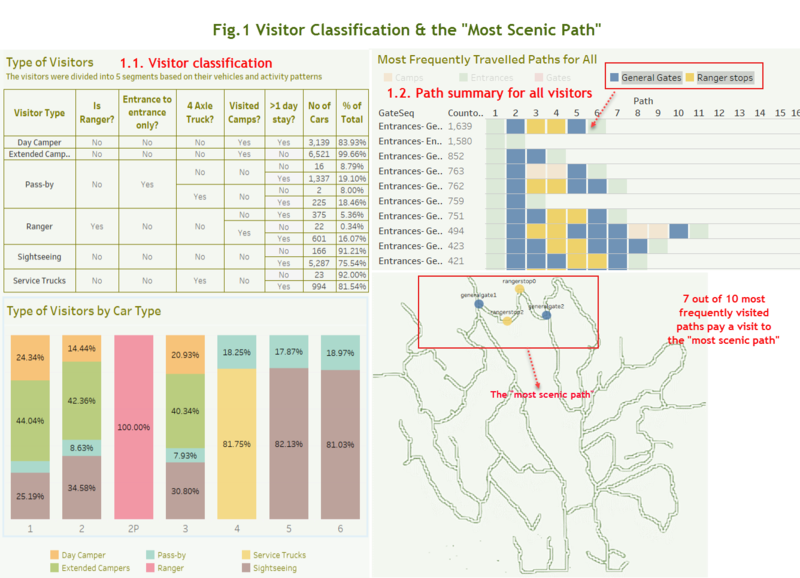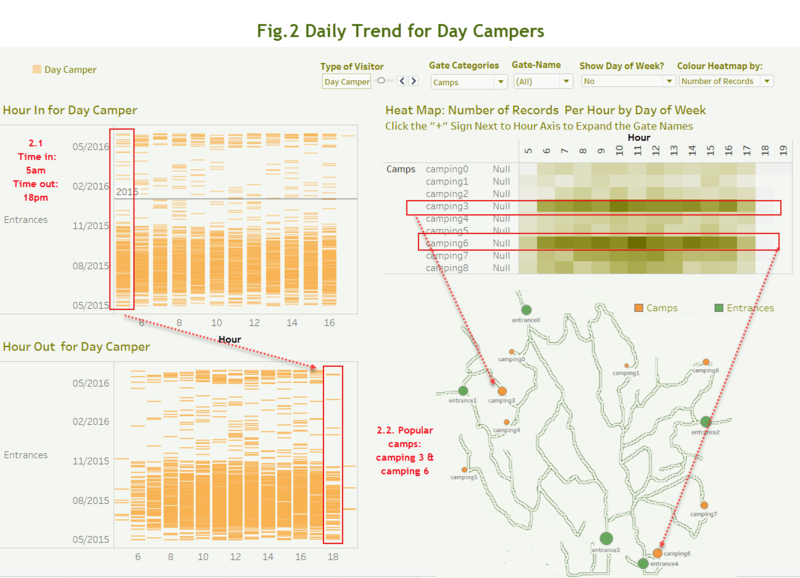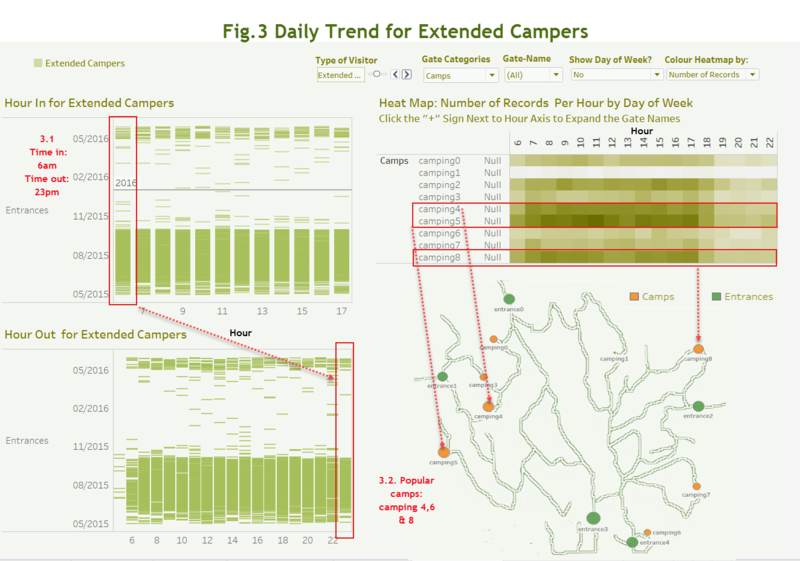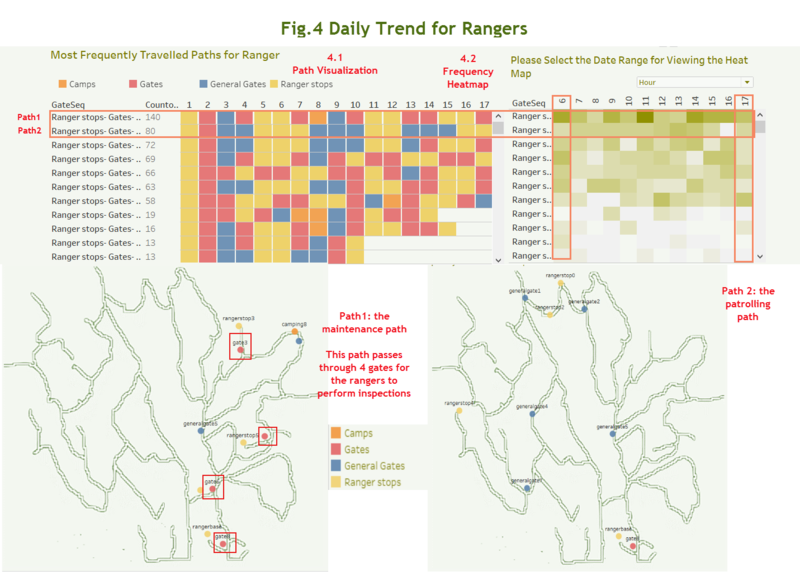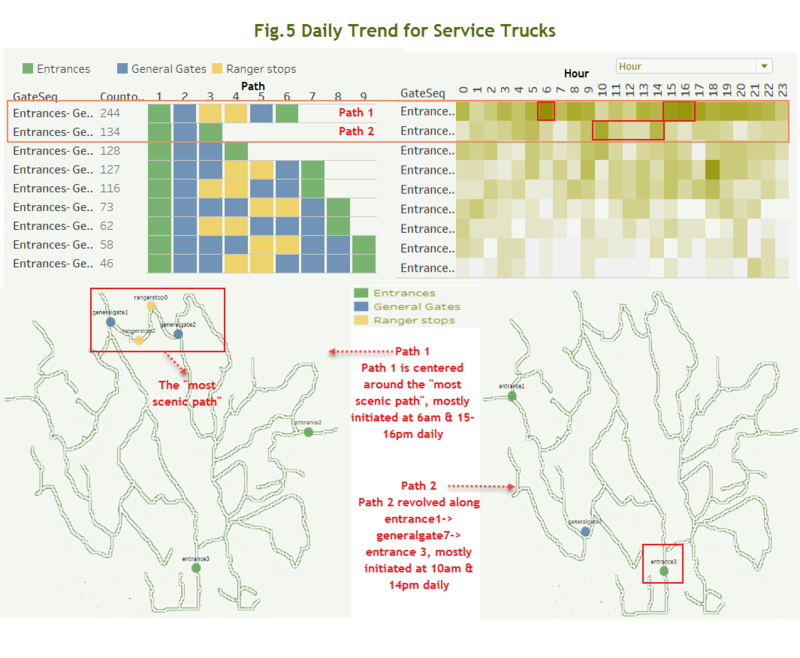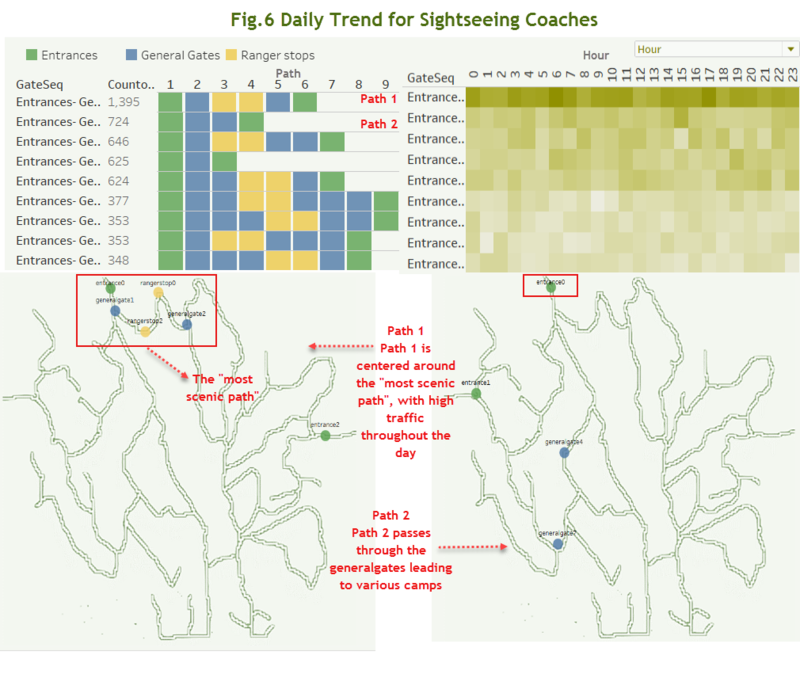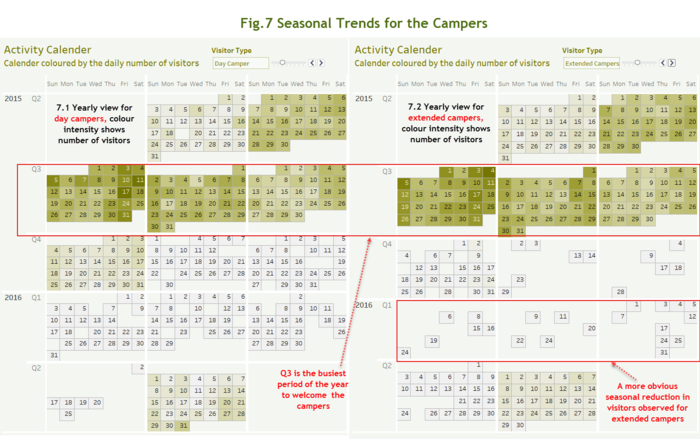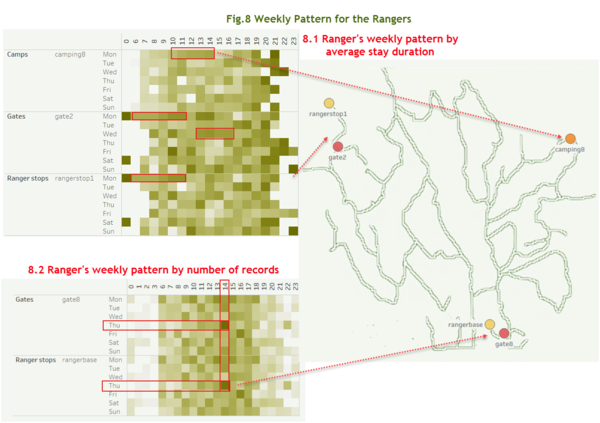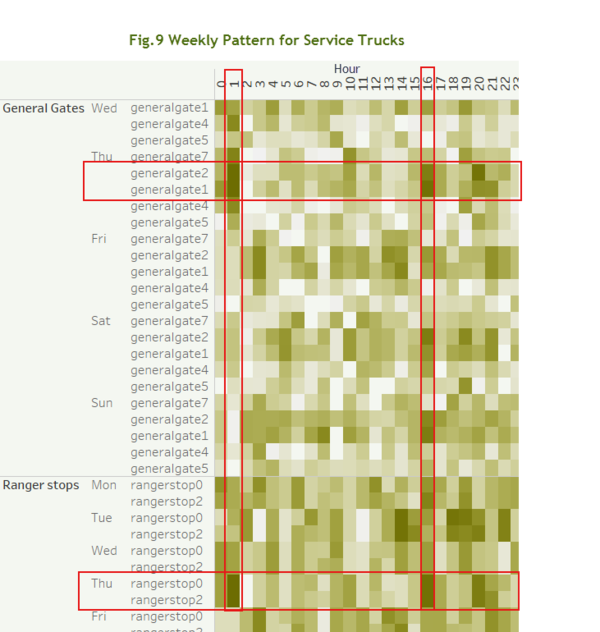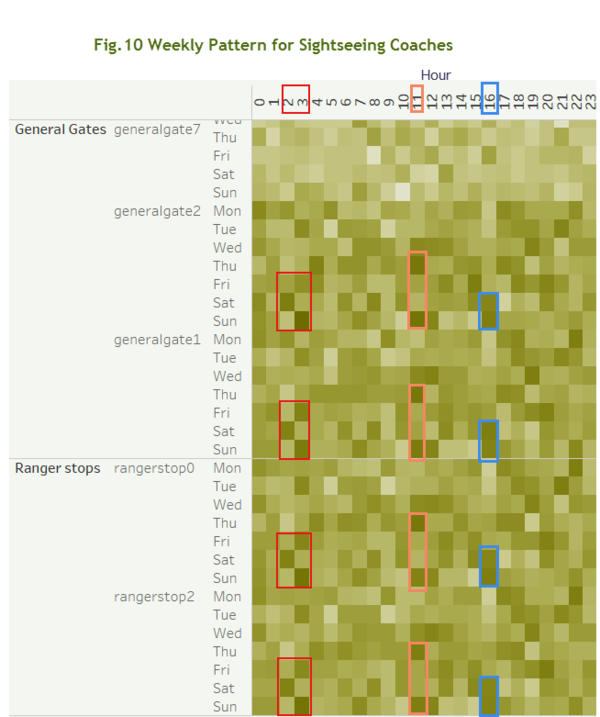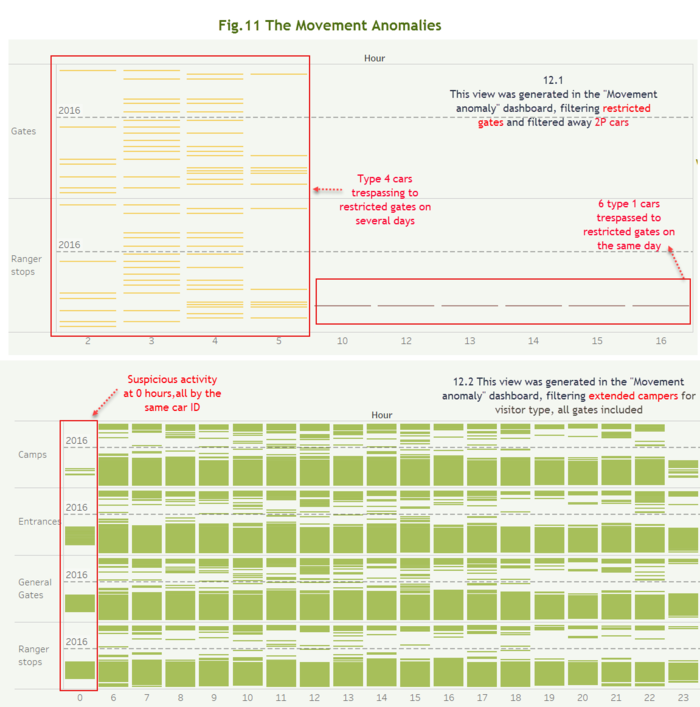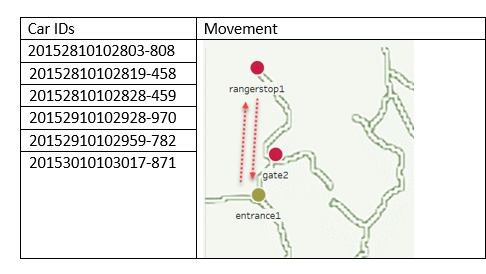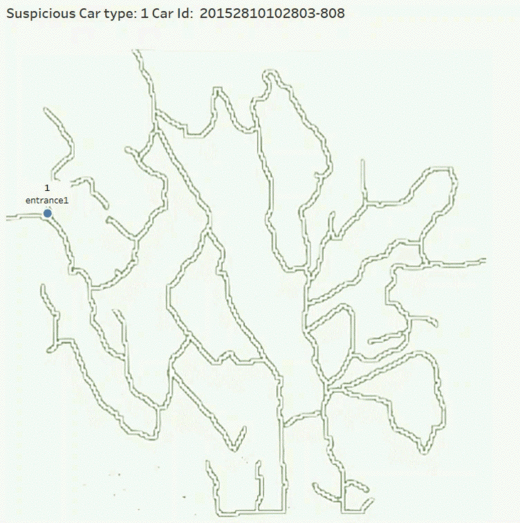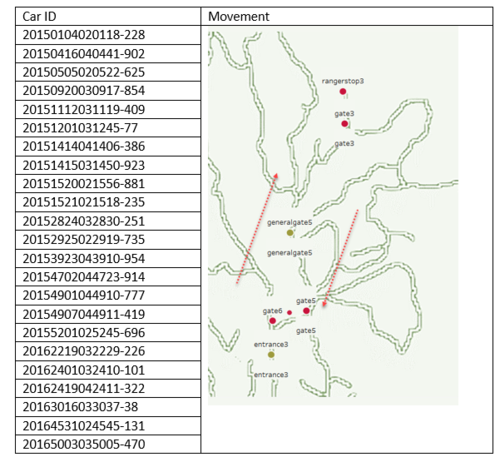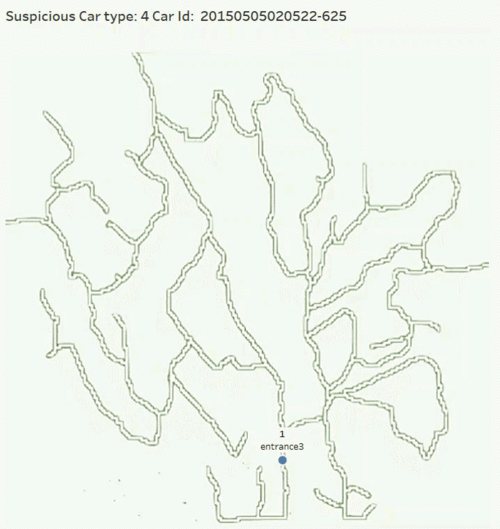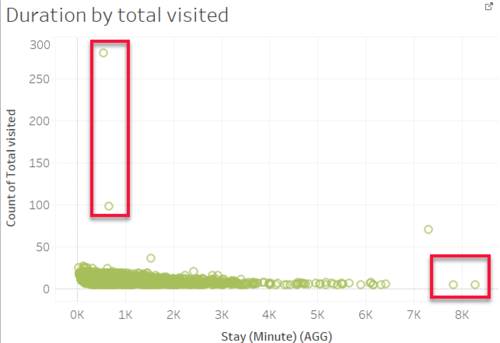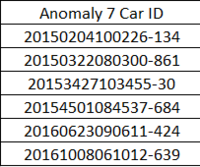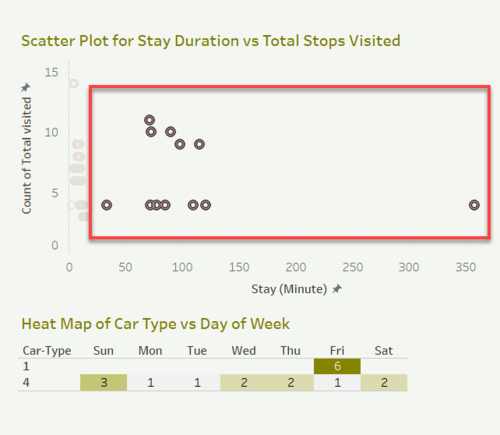Difference between revisions of "ISSS608 2016-17 T3 Assign GUAN YIFEI Visualization"
Yfguan.2016 (talk | contribs) |
Yfguan.2016 (talk | contribs) |
||
| (10 intermediate revisions by the same user not shown) | |||
| Line 11: | Line 11: | ||
| style="font-family:Century Gothic; font-size:100%; solid #1B338F; background:#FFF0F5; text-align:center;" width="25%" | | | style="font-family:Century Gothic; font-size:100%; solid #1B338F; background:#FFF0F5; text-align:center;" width="25%" | | ||
; | ; | ||
| − | [[ISSS608_2016-17_T3_Assign_GUAN_YIFEI_Data_Preparation|<b><font size="2"><font color="#BC8F8F">Methodology & | + | [[ISSS608_2016-17_T3_Assign_GUAN_YIFEI_Data_Preparation|<b><font size="2"><font color="#BC8F8F">Methodology & Dashboard Design</font></font></b>]] |
| style="font-family:Century Gothic; font-size:100%; solid #1B338F; background:#FFF0F5; text-align:center;" width="25%" | | | style="font-family:Century Gothic; font-size:100%; solid #1B338F; background:#FFF0F5; text-align:center;" width="25%" | | ||
| Line 28: | Line 28: | ||
==The Daily Trends== | ==The Daily Trends== | ||
| + | <b>Note: The outliers observed in part 3 were removed for the analysis of long period patterns to avoid misunderstandings.</b> | ||
<table border='1'> | <table border='1'> | ||
<tr> | <tr> | ||
<th>Patterns</th> | <th>Patterns</th> | ||
<th>Visualization</th> | <th>Visualization</th> | ||
| − | |||
</tr> | </tr> | ||
<tr> | <tr> | ||
| − | <td><b> 1. | + | <td><b> 1. Setting the scene – classification of visitors & the “most scenic path” </b> |
| − | <br> | + | <br>The visitors were divided into 6 segments based on the types of vehicles they drive and their activities patterns, summarized in Fig 1.A below. The patterns of life analysis will address each segment separately. |
| − | <td>[[File: | + | |
| − | + | <br>Fig 1.B shows the most frequently visited paths (by gate categories) for all segments of visitors, in which we noticed the route “general gate-rangerstop-rangerstop-general gate” appeared very frequently. The high visitor volume indicates that most likely this path has most attractions in the reserve. For easier identification, this route will be addressed as “the most scenic route” in the subsequent analysis. | |
| + | </td> | ||
| + | <td>[[File:gyf_updated1_1.png|800px|center]]</td> | ||
</tr> | </tr> | ||
<tr> | <tr> | ||
| − | <td><b>2.Day Campers</b><br> | + | <td><b>2.Day Campers</b><br>Refer to Fig 2.1, day campers started to enter the reserve at 5am and left the park by 18:00. In terms of camp selection, Fig 2.2 reveals that camp3 and 6 are their most popular choices, possibly because they are located nearer to the entrances. Accessibility could be one of the considerations for the day campers in choosing their campaign locations due to the limited time they have in the park.</td> |
| − | <td | + | <td>[[File:gyf_updated2.png|800px|center]]</td> |
| − | + | ||
| − | |||
</tr> | </tr> | ||
<tr> | <tr> | ||
<td><b>3.Extended campers</b> | <td><b>3.Extended campers</b> | ||
| − | <br> | + | <br>The day for extended campers started a bit later than day campers, from 6am onwards. The time of exit for them also spread over a longer time range (Fig 3.1). Unlike the day campers, they tend to settle down at the more secluded camp sites like camp 5 and camp 8, to enjoy a quiet night of sleep (Fig 3.2).</td> |
| − | + | <td>[[File:gyf_updated3.png|800px|center]] | |
| − | <td>[[File: | + | |
| − | |||
| − | |||
</tr> | </tr> | ||
<tr> | <tr> | ||
| − | <td><b>4. | + | <td><b>4.Rangers</b> |
| − | <br> | + | <br>The day of rangers started from the ranger base and ends there with their first shift started at 6am and the last shift started at 17pm (Fig 4.2). They travelled by long but fixed paths, the reason could be that they are working on routine shifts (Fig 4.1). There are two typical paths adopted by the rangers, the maintenance path and the patrolling path. The maintenance path passed through various restricted gates, which was normally started at 6am,11am and 14pm. The patrolling path covered the entire reserve, started at regular hour intervals.</td> |
| − | + | <td>[[File:gyf_updated4.png|800px|center]] | |
| − | <td>[[File: | ||
| − | |||
| − | |||
</tr> | </tr> | ||
<tr> | <tr> | ||
| − | <td><b> 5. | + | <td><b> 5.Service Trucks </b> |
| − | <br> | + | <br>The service trucks are axle-4 and above heavy vehicles which moved around the reserve throughout the day. They seemed to be visiting the reserve at fixed hours daily – majority of them reported to the “most scenic path” at 6am and 15-16pm daily (path 1 in Fig 5) while the others revolved along entrance 1->generalgate7->entrance 3 at 10am & 14pm daily. These are probably service or supplies trucks transporting goods in and out of the reserve. </td> |
| − | <td>[[File: | + | <td>[[File:gyf_updated5.png|800px|center]]</td> |
| − | |||
| − | |||
</tr> | </tr> | ||
<tr> | <tr> | ||
| − | <td><b> 6. | + | <td><b> 6.Sightseeing coaches </b> |
| − | <br> | + | <br>The sightseeing coaches brought guests to the reserves throughout the day, without entering into the camp sites. Majority of the visitors were brought to the “most scenic path” from different entrances (path 1 in Fig 6) while the rest were dropped along the camping path (path 2 in Fig 6) which connected camps 3,4,5. Unlike the truck drivers, the sightseeing coaches used entrance 3 instead.</td> |
| − | <td>[[File: | + | <td>[[File:gyf_updated6.png|800px|center]]</td> |
| − | |||
</tr> | </tr> | ||
</table> | </table> | ||
| Line 81: | Line 74: | ||
<table> | <table> | ||
<table border='1'> | <table border='1'> | ||
| − | |||
<th>Patterns</th> | <th>Patterns</th> | ||
<th>Visualization</th> | <th>Visualization</th> | ||
| − | |||
| − | |||
| − | |||
| − | |||
| − | |||
| − | |||
<tr> | <tr> | ||
| − | <td> <b> | + | <td> <b>1.Campers </b> |
| − | <br> | + | <br>Fig 7 provides the yearly visitor traffic calendar for the campers. The campers visited the reserve more often from May to Aug, possibly because this is the warm period of the year. The highest traffic of campers was observed in July 2015. There is a drastic drop in the campers, especially extended campers, from Q4 2015 onwards, which could be attributed to the colder weather. </td> |
| − | <td>[[File: | + | <td>[[File:gyf_updated8.png|700px|center]]</td> |
| − | |||
</tr> | </tr> | ||
<tr> | <tr> | ||
| − | <td> <b> | + | <td> <b>2. Rangers Trend </b> |
| − | <br> | + | <br>Fig 8 below reveals weekly activity pattern for rangers. In 8.1, the heatmap was configured to show the average stay duration for the rangers at various gates. We noticed the rangers would stay for extended durations at camping 8 (Mondays, 10am to 14pm) as well as gate 2 & rangerstop 1 (Mondays 6am – 11am, Wednesdays 13 – 16pm). The rangers could be doing inspection or maintenance works at this these locations. Looking at the reserve map, we can observe that ranger stop 1 and camping 8 are both located at the “dead ends” of the reserve, with no paths extending beyond them – it is likely that these two locations are surrounded with floras whereby periodic maintenance is required. |
| − | + | ||
| − | <br> | + | <br>In Fig 8.2 we could see the rangers gathered at the rangerbase and gate 8 (which is in close proximity to the ranger base) on Thursdays 14pm. It could be an indication that the weekly ranger meetings were held on Thursdays 14pm at the rangerbase.</td> |
| − | < | + | <td>[[File:gyf_updated9.png|600px|center]]</td> |
</tr> | </tr> | ||
<tr> | <tr> | ||
| − | <td> <b> | + | <td> <b>3.Service Trucks</b> |
| − | <br> | + | <br>Fig 9 below shows the weekly movement pattern for service trucks at various gates. We noticed that there were a higher number of service trucks moved pass the “connecting path” on Thursdays, at two prominent timings: 1am and 16pm. This might be the scheduled delivery/pick up hours for the service trucks. </td> |
| − | <td>[[File: | + | <td>[[File:gyf_updated10.png|600px|center]]</td> |
</tr> | </tr> | ||
<tr> | <tr> | ||
| − | <td> <b> | + | <td> <b>4. Sightseeing coaches</b> |
| − | <br> | + | <br> <br>Lastly, Fig 10 shows the weekly movement pattern for sightseeing coaches. The sightseeing coaches seemed to be bringing the visitors to the reserve on fixed days and hours, as the darker blocks on the heatmap tend to appear in regular intervals. For example, the coaches tend to visit the reserve at below timings: |
| − | |||
| − | |||
| − | |||
| − | |||
| − | |||
<br>-Fridays & Sundays 3am <br>-Thursdays & Sundays 11am <br>-Sundays 16pm <br>-Mondays 22 pm </td> | <br>-Fridays & Sundays 3am <br>-Thursdays & Sundays 11am <br>-Sundays 16pm <br>-Mondays 22 pm </td> | ||
| − | <td>[[File: | + | <td>[[File:gyf_updated11.png|600px|center]] |
</tr> | </tr> | ||
</table> | </table> | ||
==The Anomalies== | ==The Anomalies== | ||
| − | <b>The | + | <b>The Movement Anomaly</b> |
| − | <br> | + | <br>We first used the “Movement Anomaly” dashboard to discover the anomalies in the visitors’ movements. Each individual movement was represented by a Gantt bar. The Y axis contains all the days in the observation period and X axis shows the hours of the day. Filters allows the users to filter to see the activities at restricted gates, or only the activities by certain type of cars or visitors. Three movement anomalies were observed. |
| − | + | [[File:gyf_updated12.png|700px|center]] | |
| − | |||
| − | |||
| − | |||
| − | |||
| − | |||
<table> | <table> | ||
| Line 138: | Line 113: | ||
</tr> | </tr> | ||
<tr> | <tr> | ||
| − | <td><br> | + | <td>In 12.1, we filtered away the 2P cars and filtered in only the restricted gates and noticed two types of trespassing behaviours: |
| − | [[File: | + | <br>a.A group of 6 cars (type 1) entered from entrance 1 trespassing restricted area ranger stop 1 from 10am to 16pm, on 10 July 2015. The sensors at gate2 did not capture any of their activities, most likely they moved to rangerstop1 from the entrance1 directly through the jungles. As discussed earlier on, rangerstop 1 is one of the areas that are frequently maintained by the rangers and floras could be found there. This could be one area where the birds are nesting. |
| + | [[File:gyf_updated13.png|600px|center]]</td> | ||
<td>The gif below shows the paths adopted by the suspicious vehicles,the restricted gates are colored in red.[[File:gyf_suspicious2.gif|520px|center]]</td> | <td>The gif below shows the paths adopted by the suspicious vehicles,the restricted gates are colored in red.[[File:gyf_suspicious2.gif|520px|center]]</td> | ||
</tr> | </tr> | ||
<tr> | <tr> | ||
| − | <td>2. | + | <td>2.b.4 vehicle entered from entrance 3 trespassing restricted areas (gate5,gate6,rangerstop6,gate3 & ranger stop 3) 23 times from 2am to 5 am, only observed on Tuesdays and Thursdays. The trespassing cars followed almost exactly the same paths. This looks like some planned acts which were only performed under the masks of the dark night. Type 4 vehicles are the heavy trucks; they could be transporting some illegal materials in or out of the preserve repeatedly. |
| − | [[File: | + | [[File:gyf_updated14.png|500px|center]]</td> |
<td>The gif below shows the paths adopted by the suspicious vehicles,the restricted gates are colored in red.[[File:gyf_suspicious1.gif|500px|center]]</td> | <td>The gif below shows the paths adopted by the suspicious vehicles,the restricted gates are colored in red.[[File:gyf_suspicious1.gif|500px|center]]</td> | ||
</tr> | </tr> | ||
<tr> | <tr> | ||
| − | <td> | + | <td>In 12.2, we kept only the “extended campers” and included all the gates in the analysis. We noticed some suspicious movements of the extended campers at 0 hours which the rest of the extended campers would not be active at this hour. Interestingly, we noticed all the activity records belong to the car ID 20154519024544-322, which stayed in the preserve for 5 months. </td> |
| − | |||
</tr> | </tr> | ||
</table> | </table> | ||
| − | <b> | + | <b>Stay Duration Anomaly</b> |
| − | <br> | + | <br>In the “Stay Duration Anomaly” dashboard we introduced two scatter plots for anomaly discovery. |
| − | + | <p>[[File:gyf_updated15.png|800px|center]]</p> | |
| − | <p>[[File: | ||
<table> | <table> | ||
Latest revision as of 12:50, 17 July 2017
|
|
|
|
|
Viz & Insights
The Daily Trends
Note: The outliers observed in part 3 were removed for the analysis of long period patterns to avoid misunderstandings.
| Patterns | Visualization |
|---|---|
| 1. Setting the scene – classification of visitors & the “most scenic path”
|
|
| 2.Day Campers Refer to Fig 2.1, day campers started to enter the reserve at 5am and left the park by 18:00. In terms of camp selection, Fig 2.2 reveals that camp3 and 6 are their most popular choices, possibly because they are located nearer to the entrances. Accessibility could be one of the considerations for the day campers in choosing their campaign locations due to the limited time they have in the park. |
|
| 3.Extended campers
The day for extended campers started a bit later than day campers, from 6am onwards. The time of exit for them also spread over a longer time range (Fig 3.1). Unlike the day campers, they tend to settle down at the more secluded camp sites like camp 5 and camp 8, to enjoy a quiet night of sleep (Fig 3.2). |
|
| 4.Rangers
The day of rangers started from the ranger base and ends there with their first shift started at 6am and the last shift started at 17pm (Fig 4.2). They travelled by long but fixed paths, the reason could be that they are working on routine shifts (Fig 4.1). There are two typical paths adopted by the rangers, the maintenance path and the patrolling path. The maintenance path passed through various restricted gates, which was normally started at 6am,11am and 14pm. The patrolling path covered the entire reserve, started at regular hour intervals. |
|
| 5.Service Trucks
The service trucks are axle-4 and above heavy vehicles which moved around the reserve throughout the day. They seemed to be visiting the reserve at fixed hours daily – majority of them reported to the “most scenic path” at 6am and 15-16pm daily (path 1 in Fig 5) while the others revolved along entrance 1->generalgate7->entrance 3 at 10am & 14pm daily. These are probably service or supplies trucks transporting goods in and out of the reserve. |
|
| 6.Sightseeing coaches
The sightseeing coaches brought guests to the reserves throughout the day, without entering into the camp sites. Majority of the visitors were brought to the “most scenic path” from different entrances (path 1 in Fig 6) while the rest were dropped along the camping path (path 2 in Fig 6) which connected camps 3,4,5. Unlike the truck drivers, the sightseeing coaches used entrance 3 instead. |
The Longer Period Trends
Note: The outliers observed in part 3 were removed for the analysis of long period patterns to avoid misunderstandings.
| Patterns | Visualization |
|---|---|
| 1.Campers
Fig 7 provides the yearly visitor traffic calendar for the campers. The campers visited the reserve more often from May to Aug, possibly because this is the warm period of the year. The highest traffic of campers was observed in July 2015. There is a drastic drop in the campers, especially extended campers, from Q4 2015 onwards, which could be attributed to the colder weather. |
|
| 2. Rangers Trend
In Fig 8.2 we could see the rangers gathered at the rangerbase and gate 8 (which is in close proximity to the ranger base) on Thursdays 14pm. It could be an indication that the weekly ranger meetings were held on Thursdays 14pm at the rangerbase. |
|
| 3.Service Trucks
Fig 9 below shows the weekly movement pattern for service trucks at various gates. We noticed that there were a higher number of service trucks moved pass the “connecting path” on Thursdays, at two prominent timings: 1am and 16pm. This might be the scheduled delivery/pick up hours for the service trucks. |
|
| 4. Sightseeing coaches
-Fridays & Sundays 3am -Thursdays & Sundays 11am -Sundays 16pm -Mondays 22 pm |
The Anomalies
The Movement Anomaly
We first used the “Movement Anomaly” dashboard to discover the anomalies in the visitors’ movements. Each individual movement was represented by a Gantt bar. The Y axis contains all the days in the observation period and X axis shows the hours of the day. Filters allows the users to filter to see the activities at restricted gates, or only the activities by certain type of cars or visitors. Three movement anomalies were observed.
| Anomalies & Car ID | Visualization |
|---|---|
| In 12.1, we filtered away the 2P cars and filtered in only the restricted gates and noticed two types of trespassing behaviours:
|
The gif below shows the paths adopted by the suspicious vehicles,the restricted gates are colored in red. |
| 2.b.4 vehicle entered from entrance 3 trespassing restricted areas (gate5,gate6,rangerstop6,gate3 & ranger stop 3) 23 times from 2am to 5 am, only observed on Tuesdays and Thursdays. The trespassing cars followed almost exactly the same paths. This looks like some planned acts which were only performed under the masks of the dark night. Type 4 vehicles are the heavy trucks; they could be transporting some illegal materials in or out of the preserve repeatedly. | The gif below shows the paths adopted by the suspicious vehicles,the restricted gates are colored in red. |
| In 12.2, we kept only the “extended campers” and included all the gates in the analysis. We noticed some suspicious movements of the extended campers at 0 hours which the rest of the extended campers would not be active at this hour. Interestingly, we noticed all the activity records belong to the car ID 20154519024544-322, which stayed in the preserve for 5 months. |
Stay Duration Anomaly
In the “Stay Duration Anomaly” dashboard we introduced two scatter plots for anomaly discovery.
| Anomalies & Car ID | Visualization |
|---|---|
| 4.Abnormally high number of stops visited with low average duration
• 20150105060134-242, 20150420100416-232 visited 4 checkpoints but stayed for over one month in the reserve (Extended camper) |
|
| 6.Hiking or sightseeing visitors with abnormally long stay in the park (they are the same group of visitors observed in 1)
|

